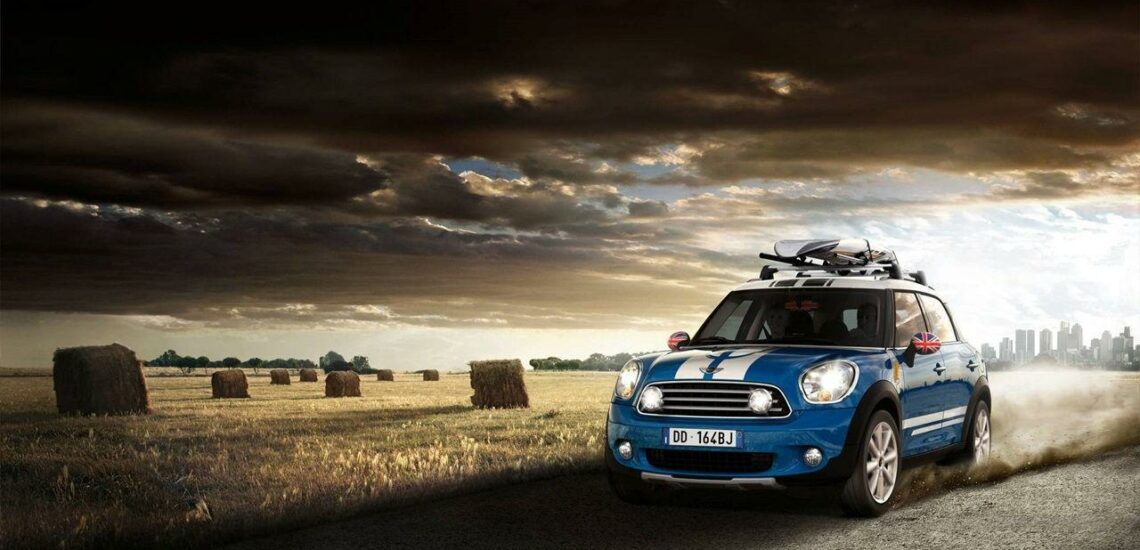Mini 汽车仅生产了 42 年,但却被评为世界上最可靠的汽车(很少发生故障)。这个品牌诞生于英国,至今仍深受车主青睐。您想知道为什么传奇的 Mini 汽车能登上 20 世纪最佳汽车排行榜并位居第二,仅次于福特 T 型车吗?那就放心吧:这款小型汽车历史悠久,拥有数百万粉丝。
一点点就能产生很大的作用:Mini 的魅力秘诀是什么?
如今,没有哪个大陆没有驾驶过这款英国小车。自小型车成功征服世界各地的道路以来,已经过去了 70 年。这款小型车出人意料地轻松地适应了德国高速公路、美国高速公路、澳大利亚高速公路,甚至非洲的崎岖道路。毕竟,世界各地的司机都希望在驾驶时节省燃料,这不仅仅是一时兴起,而是一种必需。此外,Mini 的空间出奇地宽敞 – 在其内部,您不会感到其他小型车所固有的拥挤或其他不适。因此,在最小的空间中,既有优雅又经济。值得注意的是,赛车手、摇滚明星、著名演员和运动员也驾驶过 Mini – 没有人能抗拒这个时尚传奇。让-保罗·贝尔蒙多、披头士乐队成员、欧洲皇室代表、夏尔·阿兹纳沃尔和许多其他名人都曾驾驶过这个品牌的汽车。甚至迷你裙也开始生产以纪念这款车型。
这款车型在电影《偷天换日》中被拍摄后,这款车的惊人人气进一步提升。就连恩佐·法拉利的车库里也有三辆 Mini 汽车!到本世纪末,这款小车已经成为了时代的象征和真正的艺术品。如今,Mini 正在成为汽车界的风格和极致魅力的标准,融合了经典和现代设计。尽管这个汽车品牌的历史很艰难,但这一切都没有改变。
想法是如何产生的:Mini 的诞生
这款小型车经历了一切:受欢迎程度和需求的起起落落、品牌所有者的变更、名称形象选项的转变、标志的修改等。这一切都始于 Leonard Lord 决定合并汽车公司 Morris Motors 和汽车制造商 Austin Motor Company。这些公司的合并导致了一家新的汽车生产公司英国汽车公司 (BMC) 的成立。这件事发生在 1952 年。作为英国汽车公司总裁,洛德非常关心制造超省油微型车的必要性。毕竟,在 20 世纪 50 年代后半期,中东的石油供应中断了(苏伊士危机)。即便在英国,车主也只能获得严格限制的汽油量。伦纳德·洛德邀请拥有工程和设计背景的希腊人亚历克·伊斯哥尼斯 (Alec Issigonis) 加入合并后的公司,担任首席设计师。后者领导着一个由 8 人组成的工作小组(两名设计师、两名工程专业学生和四名绘图员)。起初,该小组的目标是开发一条全新的汽车系列,以满足各种人群的需求。前三款车型的名称非常简单 – Maxi、Midi 和 Mini。但汽油短缺使前两个项目搁浅,工作只继续朝着制造最小汽车的方向发展。管理层向伊斯哥尼斯明确表示,他有权做任何他想做的事情,但不能超出 3 x 1.2 x 1.2 米的尺寸,同时车内必须能够舒适地容纳四个成年人——三名乘客和一名司机。亚历克·伊斯哥尼斯不仅工作一丝不苟、一丝不苟。他对任务的严谨和奉献精神令人惊叹。他不仅将工作时间,还将个人时间视为将另一个设计理念变为现实的机会。因此,在咖啡馆吃午饭时,伊斯哥尼斯设法直接在餐巾纸上画了一辆汽车,并吸引了所有人——保安、机械师、秘书——来测试原型车。这种一丝不苟加上工程学知识是完全合理的——1957 年,第一款 Mini 原型车几乎准备就绪。在车内,80% 的车身体积分配给内饰,剩下的五分之一分配给发动机舱。直列四缸发动机横向排列,配备水冷和前轮驱动。车轮为 10 英寸。车门底部有一个箱子,可以装一瓶 Gordon’s Gin。第一个原型车因其橙色而被命名为 Orange Box。
然而,英国汽车公司又花了两年时间,投入了 1000 万英镑,这在 50 年代末是一笔巨款,才开始量产。但前景更加光明。英国汽车公司总裁 Leonard Lord 比任何人都更了解他们,因此没有吝惜开支。广告宣传活动使得 Mini 汽车品牌于 1959 年 8 月 26 日在 100 个国家正式开始销售后,数千辆汽车瞬间售罄。两条强大的装配线几乎无法提高产量,到 1959 年底,又售出了 2 万辆汽车。第二年,也就是 1960 年,他们必须每周生产 3000 辆汽车。在英国,Alec Issigonis 的作品以 Morris Mini Minor 和 Austin Seven 的名称出售,而在英国以外则以 Morris 850 和 Austin 850 的名称出售(最后一个数字代表发动机排量的整数)。这些汽车在两家工厂组装:位于考利(牛津)的工厂以 Morris Mini Minor 的名义组装,位于朗布里奇(伯明翰)的工厂以 Austin Seven 的名义组装。尽管 Mini 是伊斯哥尼斯的最后一款汽车,但该品牌的创始人还是被授予了爵士头衔。
微型车的胜利:一步步走向胜利
我们不能说 Mini 是完美的。当然,它有很多工作上的缺陷,其中一些是在实际操作后才暴露出来的。例如,在雨中,内饰的防水性能令人厌恶(或者说完全没有防水性能)——许多裂缝无法阻止水渗入内部,车底就像一个水坑。然而,BMC 的设计团队很快就消除了发现的缺陷——成功应该会得到发展,声誉也会得到维护。
然后,在 1960 年 9 月,Morris Mini Traveller 旅行车(又名 Austin Seven Countryman)出现在世界各地的道路上。几年后,传奇设计师 John Cooper 加入了改进 Mini 的工作。他在前轮上增加了盘式制动器,将发动机的功率增加到 55 马力,排量增加到 1 升。 Cooper 的努力成果是一款出色的赛车,这是一辆超小型车的运动型改装车,起初并没有受到任何人的重视 – 无论是拉力赛道上的竞争对手,还是 BMC 的管理层。但赛车版被证明是易于操控、紧凑且机动性强的,并且在四年内(从 1964 年到 1967 年),Mini Cooper 在最艰难的蒙特卡洛拉力赛中击败了所有人。在比赛中获胜后,那些想购买迷人微型车的人开始排队。销量飙升,BMC 的利润令人震惊。1961 年,时尚、方便停车的汽车充斥伦敦。Mini 促进了人口的流动性。此外,在那些年里,它是去任何地方的最佳汽车 – 后门、宽敞的后备箱、折叠座椅 – 一切都是由设计师为在路上度假的旅行者设计的。
第 100 万辆汽车于 1965 年发布,第 200 万辆于 1969 年发布,第 500 万辆于 1986 年发布。
1968 年,Mini 的生产完全转移到 Longbridge。20 世纪 60 年代末,该汽车制造商接管了捷豹,并更名为英国汽车控股公司 (ВМН)。此外,他们意识到不可能生产不同品牌的汽车。因此,无论制造商工厂如何,该汽车控股公司的所有汽车都被称为 Mini。
在接下来的二十年里,这款超小型车的产量稳步扩大,需求也随之增加。1969 年,Mini Limited Edition 1000 的首个特别版向公众推出。特别版和限量版在外观和装饰上与基本版不同。然而,有时它们也包括技术改进。同年,即 1969 年,出现了三款新车型:Mini Clubman、Mini Clubman Estate 和 Mini 1275 GT – 也就是说,专业运动型汽车和“宽敞”的 Mini 都在该系列中。
BMC 先是将 Mini 的生产权卖给了英国利兰汽车公司,随后该品牌被罗孚集团(自 1969 年起更名为英国利兰汽车公司)收购,1994 年又被巴伐利亚公司 BMW 收购。但后者决定将该品牌打造成拥有自己的生产设施和宏伟未来计划的独立子公司。为了与传奇告别,BMW 更新了牛津工厂,发布了四款特别版的超小型车,并推出了 MINI 的新愿景。这就是现在品牌名称的写法,用大写字母,以免将新奇汽车与经典汽车混淆。更新后的 MINI 品牌不仅顺应了时代的发展,而且一如既往地塑造了时代。
1995 年,小巧的 Mini 被英国最权威的汽车杂志 Autocar 的读者评为本世纪最佳汽车。四年后,在拉斯维加斯的汽车颁奖典礼上,它被评为“本世纪欧洲汽车”。
MINI 今日
弗兰克·斯蒂芬森 (Frank Stephenson) 是一位才华横溢的设计师,他有着非常不落俗套的思维,是现代 MINI 的缔造者。他的主要成就或许在于,弗兰克几乎改变了这款微型车的一切,但一切都保持原样。2007 年,MINI Countryman 首次亮相,成为该公司首款全轮驱动汽车和历史上最大的 MINI,MINI Clubman 也以加长的底座和独特的开门方式下线。
特别版 MINI All4 Racing 赢得了 2011 年达喀尔拉力赛。2013 年、2014 年和 2015 年,MINI 仍保持着达喀尔拉力赛第一名的宝座。
2012 年,第三代 MINI 向公众推出:现在,除了经典的三门车型外,还有五门掀背车可供选择。这款 MINI 拥有更大的内部空间,这个版本至今仍是买家的最爱。
新的公司标识诞生于 2015 年。三维标识已变为二维,并尽可能地图形化:它显示了车轮和机翼,以及位于中心的四个大写字母 MINI。这种设计可以追溯到经典 MINI 的早期,但体现了现代对简洁主义的渴望。
MINI Countryman 插电式混合动力版于 2017 年出现在全球道路上,已成为汽车卓越的新水平。
2018 年,第四代传奇 MINI 掀背车和敞篷车问世。时尚的英国国旗尾灯凸显了技术和设计理念。
该公司成立 60 周年之际推出了一款收藏车型——独家 MINI 60 周年收藏系列,采用历史悠久的英国赛车绿 IV 颜色,引擎盖上带有品牌条纹。
2019 年 11 月,MINI 品牌的第一款量产电动车、三门电动掀背车 Classic Mini Electric(一款经过修复的经典城市车)在装配线上推出。
小型车的大故事还在继续……
但是,没有驾照,即使是微型车,你也不能驾驶!我们邀请您在我们的网站上快速轻松地办理国际驾照。这不会花费您太多时间和精力,但这份文件不仅在驾驶 MINI 时有用。

出版 二月 18, 2021 • 4m





